Sources Of Information During The War: How To Check And Which To Trust was a training for journalists conducted by Olena Usmanova, candidate of philological sciences and associate professor of the Department of Journalism of the Zaporizhzhia National University.
It is especially important now to carefully filter and verify the information we receive and share. The topic is extremely relevant because russian propaganda is waging an information war, trying to make people panic and discourage them. Today, the media, and even more so, social networks, are saturated with various information, which, unfortunately, not every time is true.
“As noted recently in the materials of the National Security and Defense Council (NSDC), the number of disinformation posts about Ukraine that are thrown into the information space and social networks every week is estimated at more than ten million. Therefore, during the war, only official channels can be fully trusted. Reliable sources of information during the war are the General Staff of the Armed Forces of Ukraine, the Ministry of Defense, the Presidential Office, the Cabinet of Ministers, the Ministry of Internal Affairs, the National Police of Ukraine, the State Emergency Situations Service (SESS), the State Border Service of Ukraine, the Center for Strategic Communications and Information Security, the State service of special communications and protection of information of Ukraine, Ground Forces of the Armed Forces of Ukraine, Naval Forces of the Armed Forces of Ukraine, and Territorial Defense of the Armed Forces of Ukraine. All others have high risks of spreading false information, which can have a negative impact on society,” Olena Usmanova emphasized.

Information becomes a powerful weapon during war. It is updated very quickly. Before using or sharing it, you need to check it carefully. In the informational material, there should be a link to the source of the information. Having a photo from the scene can ensure the veracity of the information. Criteria for trustworthy news are also maximum impartiality and lack of emotional presentation of the material. You should also remember the rule of “three sources,” that is, check information in at least three known sources.
The trainer prepared specific recommendations for journalists on how to recognize disinformation and fakes:
Verification of information in official sources.
If a post links to a video, watch it and see if the words were taken out of context.
If you come across a message on the X (Twitter) network, check the user’s history at the time the account was created and, if possible, scan it through Botometer X, a service that detects bots.
Only rely on reliable sources; if an “independent journalist” is featured in the podcast, check their background and previous publications.
If the post relies on the statements of official persons or departments, verify the information on the websites of these departments directly.
Olena Usmanova also drew the attention of journalists to the fact that a media literacy project called Filter is operating in Ukraine. In October 2022, Filter published a map of verified sources in different regions of Ukraine. On the map, you can select a region of Ukraine and see a list of mass media that the project team considers to be reliable sources of information.
In September 2023, the Interactive Map of recommended media from the Institute of Mass Information and the Media Detector for monitoring the domestic information space became operational. In addition to online media, the media that work in the regions were studied; television and radio companies were also included in the project – 142 Ukrainian resources from 24 regions of Ukraine and Crimea: 130 regional and 12 nationwide.
“Extremely informative and useful training. Last year, thanks to the help of the NUJU, we resumed publication of our newspaper, Holos Huliaipillia, and continue to distribute it in the front-line territories. There, every word counts more than anywhere else. Because we are, in fact, the only official source of information in that area, it is important for us to check very carefully everything we write about so that people believe in us and victory. Therefore, the knowledge of how to work with information and identify fakes is extremely important for us; the journalist emphasized,” noted Huliaipole journalist Tamara Bort after the event.
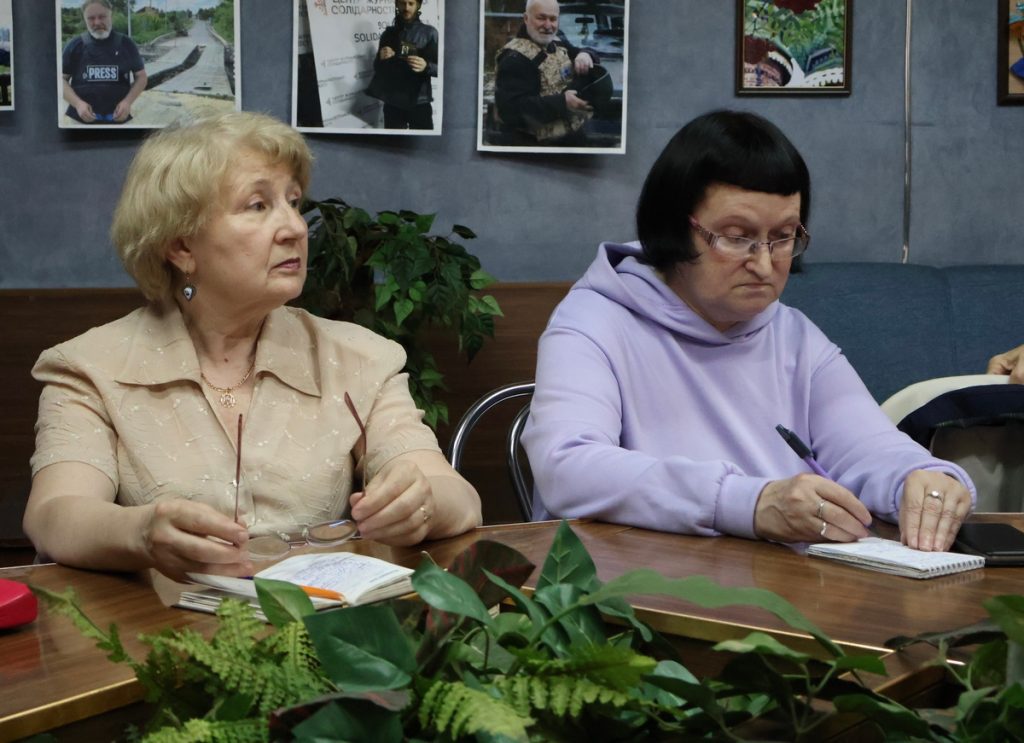

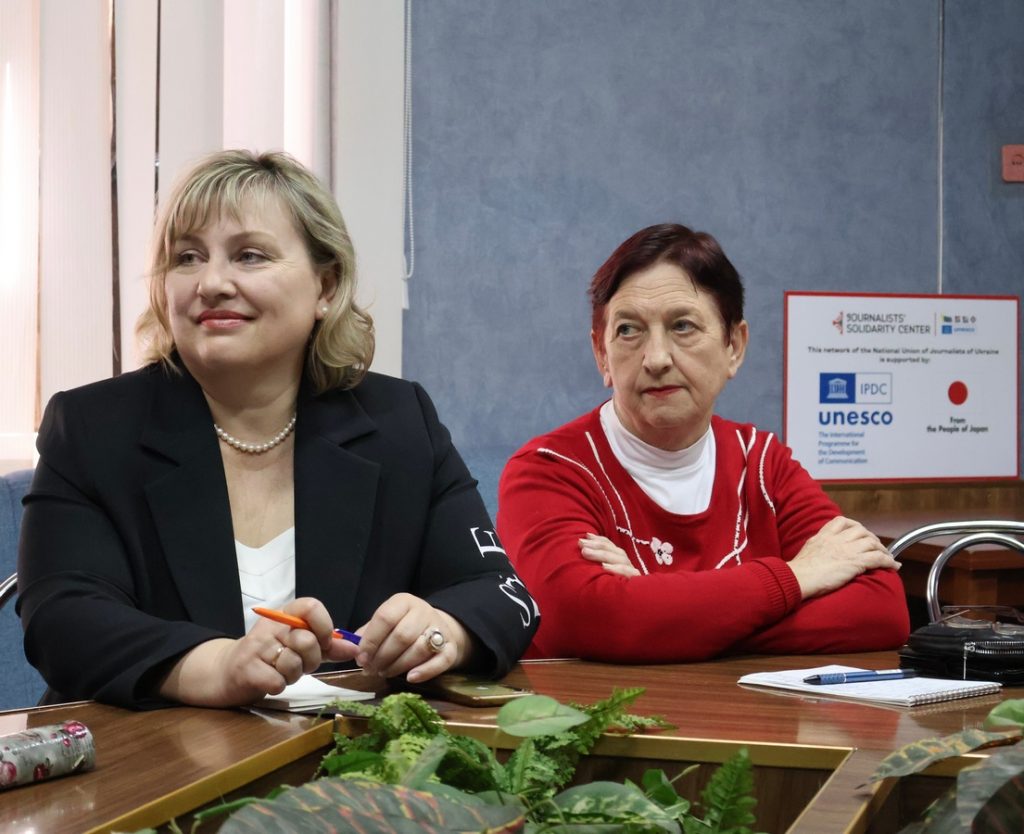
Call the Zaporizhzhia JSC at 096 277 5352 (Nataliya Kuzmenko and Valentyna Manzhura, the Zaporizhzhia JSC coordinators). The Center’s address is 152 Sobornyi Avenue.
ABOUT JSC
The Journalists’ Solidarity Centers is an initiative of the NUJU implemented with the support of the International and European Federations of Journalists and UNESCO. The initiative is designated to help media representatives working in Ukraine during the war. The Centers operate in Kyiv, Lviv, Ivano-Frankivsk, Chernivtsi, Zaporizhzhia, and Dnipro and provide journalists with organizational, technical, legal, psychological, and other types of assistance.
ABOUT UNESCO
UNESCO is the United Nations Educational, Scientific, and Cultural Organization. It contributes to peace and security by promoting international cooperation in education, sciences, culture, communication, and information. UNESCO promotes knowledge sharing and the free flow of ideas to accelerate mutual understanding. It is the coordinator of the UN Action Plan on the Safety of Journalists and the Issue of Impunity, which aims to create a free and safe environment for journalists and media workers, thus strengthening peace, democracy, and sustainable development worldwide. UNESCO is working closely with its partner organizations in Ukraine to provide support to journalists on the ground.
The designations employed and the presentation of material throughout this digest do not imply the expression of any opinion whatsoever on the part of UNESCO concerning the legal status of any country, territory, city, or area or its authorities or concerning the delimitation of its frontiers or boundaries.
The authors are responsible for the choice and the presentation of the facts contained in this digest and for the opinions expressed therein, which are not necessarily those of UNESCO and do not commit to the organization.
Valentyna Bystrova and Nina Derkach
Photo by Dariya Zyrianova and Nina Derkach
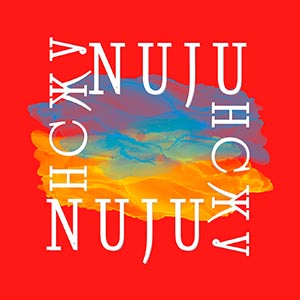
 THE NATIONAL UNION OF
JOURNALISTS OF UKRAINE
THE NATIONAL UNION OF
JOURNALISTS OF UKRAINE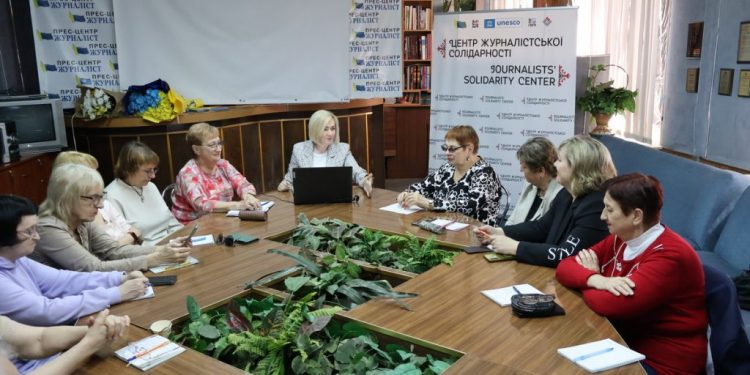
![International Media Organizations: peace plan mustn’t envision amnesty for crimes against journalists 6 Ukrainian flag on Independence Square [Maidan Nezalezhnosti] in Kyiv, Ukraine (archive image). EPA-EFE / Oleh Petrasiuk](https://nuju.org.ua/wp-content/uploads/2025/12/maidan-flag-yezhak-2022-350x250.jpg)
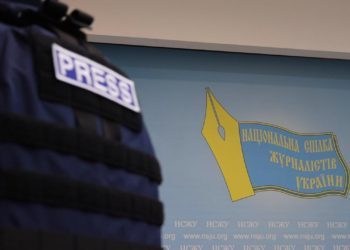

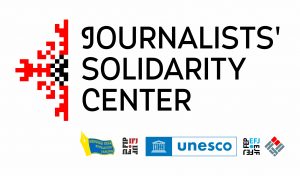
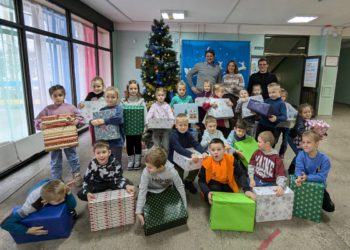
![International Media Organizations: peace plan mustn’t envision amnesty for crimes against journalists 10 Ukrainian flag on Independence Square [Maidan Nezalezhnosti] in Kyiv, Ukraine (archive image). EPA-EFE / Oleh Petrasiuk](https://nuju.org.ua/wp-content/uploads/2025/12/maidan-flag-yezhak-2022-120x86.jpg)






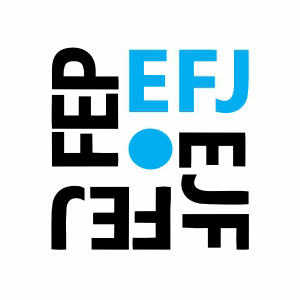



Discussion about this post